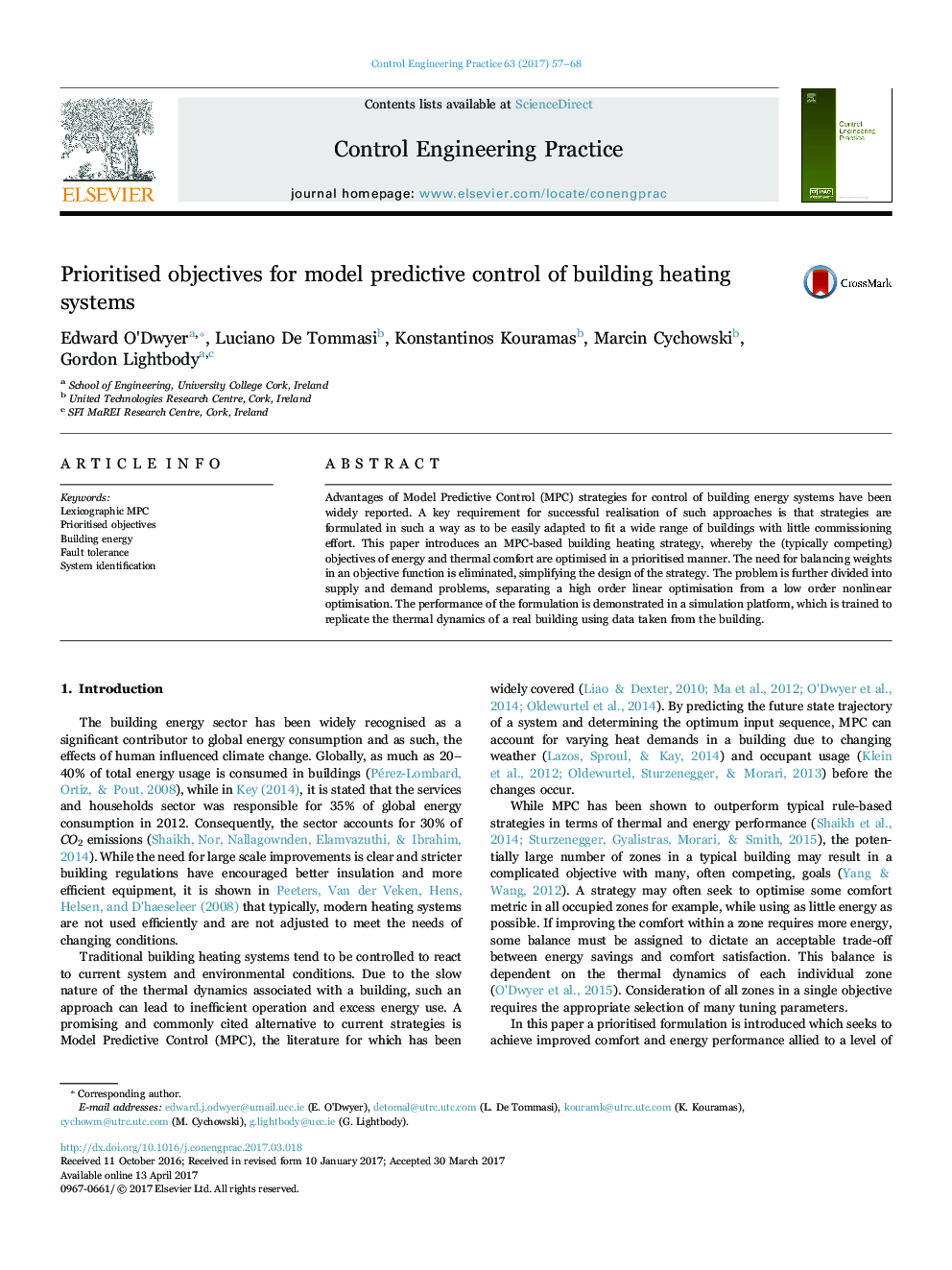| Article ID | Journal | Published Year | Pages | File Type |
|---|---|---|---|---|
| 5000381 | Control Engineering Practice | 2017 | 12 Pages |
Abstract
Advantages of Model Predictive Control (MPC) strategies for control of building energy systems have been widely reported. A key requirement for successful realisation of such approaches is that strategies are formulated in such a way as to be easily adapted to fit a wide range of buildings with little commissioning effort. This paper introduces an MPC-based building heating strategy, whereby the (typically competing) objectives of energy and thermal comfort are optimised in a prioritised manner. The need for balancing weights in an objective function is eliminated, simplifying the design of the strategy. The problem is further divided into supply and demand problems, separating a high order linear optimisation from a low order nonlinear optimisation. The performance of the formulation is demonstrated in a simulation platform, which is trained to replicate the thermal dynamics of a real building using data taken from the building.
Related Topics
Physical Sciences and Engineering
Engineering
Aerospace Engineering
Authors
Edward O'Dwyer, Luciano De Tommasi, Konstantinos Kouramas, Marcin Cychowski, Gordon Lightbody,
